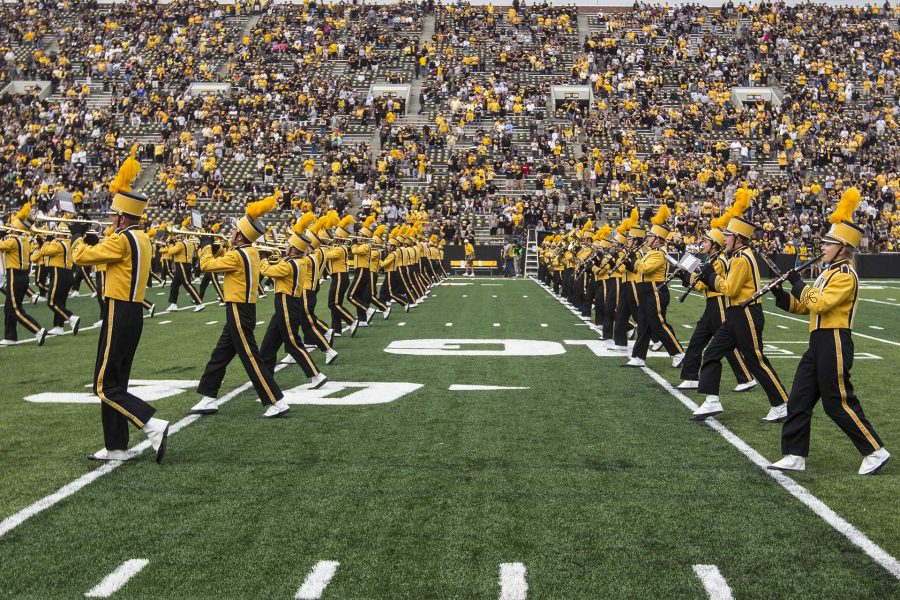By Sarah Watson
[email protected]
“Horns HOT. Measures 26-34, horns UP.”
The members of the Hawkeye Marching Band hear instructions such as this every week while practicing for their Saturday halftime shows in Kinnick Stadium. In addition to learning the music, for each show, the band learns a new “drill,” or maps of where each band member needs to stand to create an image or design when looking at it from above.
At the Oct. 7 Homecoming Game against Illinois, the band closed its Beatles-theme halftime show with a nod to the University of Iowa Stead Family Children’s Hospital using the drill.
This fall, football fans after the first quarter started to wave to the children watching the Hawkeye football team from the top floor of the Children’s Hospital.
The 250-member band joined the movement, forming a giant hand and marching back and forth to give the appearance of waving at the kids on the 12th-floor observation deck.
RELATED: Doing the Iowa wave
UI music student Tim Gray designed the drill especially for the Homecoming show. Gray, 44, has created drills for high schools, colleges, and professional marching bands for nearly 25 years, and he is now a judge for Drum Corps International while he pursues a degree in music education.
Gray worked with the band for two weeks leading up to the game, teaching band members the formations and directing the music for the Beatles-theme show. The band made formations of iconic symbols of ’60s pop culture including a heart, rainbow, peace sign Volkswagen bus, and ending with what Gray called a “wow-factor” — the waving hand.
“Keeping the lines of the fingers was the hardest part,” he said. “The people on the ends go a long way, and the people in the middle don’t go very far. All of a sudden, I have to tell people you have to take even-sized steps — everybody — for the hand to work.”
The band usually learns around 20 to 30 pages of drills for each show, band Director Kevin Kastens said. Each page shows the design and instructions on how to move from formation to formation. Eventually, the band practices how to move between formations on different pages.
“It’s a very methodical process,” Kastens wrote in an email to The Daily Iowan. “The band learns the drill and music separately at the start, then we begin to combine the two elements.”
As the band members learn the formations and music at practices, leaders will yell “Horns HOT,” meaning the band should both play and march, or “Horns COLD,” signaling to the band to march silently.
For two piccolo-section leaders, Rebecca Peterson and Alyson Krapfl, in their third and fifth years, learning to march the hand was one of the most difficult maneuvers they can remember.
“It’s just hard because you have to keep in line with the people behind you as well as in front of you, and obviously, you can’t look behind you while you’re trying to play forward,” Krapfl said. “Anything that is a shape is challenging just because the audience is going to notice it’s supposed to be a shape, so if somebody’s wrong, everyone’s going to know that you’re wrong.”



